Angola: the big unknown
A civil war raged in Angola from independence in 1975 until 2002. Even now, the situation is considered critical and visits are discouraged. The country doesn’t make any efforts to change that and it was difficult to obtain a visa.
How does it look in a big unknown country which is still closed to the world? And how would I manage?
Between Congo Kinshasa and Angola there were a few kilometers of no-man’s land. Until the river at the border a few kids kept me company. They didn’t follow across the bridge.
After a few more kilometers the first checkpoints appeared. They dropped everything when they saw me and helped push the bike up the hill to immigration. What a nice welcome!
It was Sunday. Lunch time. No surprise that the person in charge wasn’t there. I waited. The few buildings were of Portuguese legacy. Unfortunately, I wasn’t allowed to photograph them.
After an hour the official arrived, noted down all my details, including all the countries which I had already visited and those where I still planned to go. Then he told me to leave without an entry stamp and collect it in Maquela. Damn, another 30 kilometers to go. It was Sunday and I didn’t know if they were open, and if so, until what time.
The road to Maquela wasn’t paved.

Sometimes, half the road had broken away.
It got a bit better after 18 kilometers but then the up and down which was typical for Africa started.
At dusk, around 6:00 pm, I reached Maquela. Let the search for the immigration office start. And in Portuguese to boot, the administrative language in Angola. They send me all over town. I reached the building, covered in sweat, just as the officials left.
Of course, they didn’t want to reopen everything to stamp the passport. At least I still had appeared in the evening and didn’t spend my first night in Angola illegally.
One of the man took me to a guesthouse which was much welcome. It was dark and I needed a shower.
On my way to immigration the next morning, I stopped to get an Angolan SIM card. That was very fast and without registration like in other countries. The nice man exchanged USD for Angolan Kwanza at a very good rate. I had been told to bring enough dollars because the exchange rate on the street would be much more favorable than in the banks. I always had my doubts about that because it usually was a sign that something wasn’t quite right in the country.
While I waited for the entry stamp, I had time to check emails. The official with the stamp was quicker than I had expected but I could stay a while longer.
From here onwards the road was paved and the Chinese were very active.
The up-and-down continued. I had assumed that Angola was at a lower altitude, but the opposite was the case.
I was rewarded with a magnificent view.
I was more and more surprised, how much more developed Angola was compared to Congo Kinshasa.
The were some nice settlements. A bit boring because all houses were alike, but some even had solar panels. Usually there was no water or electricity in these villages.
When I took the photo, immediately a soldier appeared. I started to question him before he could tell me that I wasn’t allowed to take photos. Those were houses for civil servants, mainly soldiers. The army and police were very present up north.
Most of the time, I stayed with the village chief (I forgot the name in Portuguese). But if I wanted solitude, it was fine to camp wild.
The up-and-down continued and I had a feeling that might be the case for all of Africa.
I came past small villages.
The road got worse and worse and I also didn’t feel so well.
The quality of the drinking water wasn’t very good. Because nothing else was available, the people drank almost anything liquid. I should have used the water filter. Boiling the water didn’t always work.
And I had completely miscalculated my speed. The climbing continued relentlessly. In most villages, there was nothing to buy.
The was a restaurant at the foot of the mountain but even they didn’t have any food.

These were small Bantu-villages which were self-sufficient. They didn’t have any money and so it wasn’t surprising there was no one to buy at the shops.
They even built their own vehicles with a lot of imagination and creativity.

It was easy to say no to the green plantains.

Unfortunately, the papayas weren’t yet ripe.

The landscape was beautiful

But I couldn’t eat it.
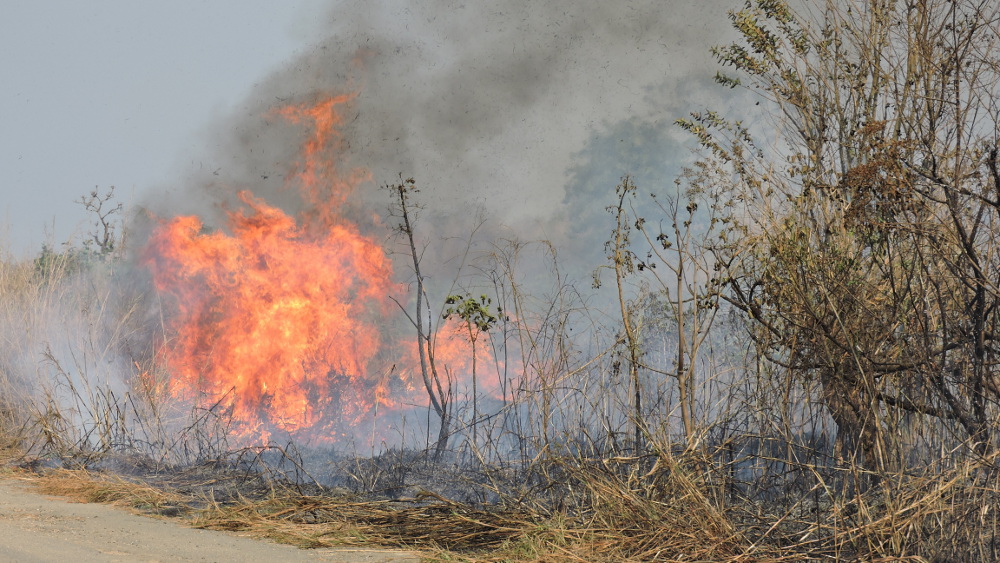
There was a lot of slash-and-burn to grow manioc. This fire was very close to the road and the wind pushed the heat my way.
I was completely exhausted when I came across some people. I asked where I could get something to eat. A man understood me and said I should be able to find something in the next village which wasn’t far.
He even helped me to push my bike up the hill.
Angola was so far the first country for which I didn’t have a map. I chose the route from Google maps and my GPS. Neither one nor the other had an altitude profile.
Concerning road surfacing, a map couldn’t be correct. As soon as the map was printed, the Chinese might have paved a road, or a previously paved road, might have lost its surface. That happened very quickly in Africa.
There was indeed a restaurant at the top of the hill with a French-speaking owner. Very nice. I got rice with tomatoes. I had invited my savior to a beer. This was probably the fanciest “restaurant” for a long stretch.
Right next to it was a police station where I could camp. I never imagined that I’d be so cold in Africa but at this altitude it got incredibly cold at night. I was very happy that I had brought a warm sleeping bag.
Next day I still didn’t feel well and was very exhausted. I needed a long rest. But I had no idea what would come next in Angola.
I had planned to return to Germany for four weeks in October. The first country where I was certain that I could enter without problems and from where flights were affordable was Zambia. Therefore, I had booked a return flight from Lusaka. There should have been enough time if noting went wrong.
I felt a bit pressured for time and hoped that the roads would remain passable.
The policemen suggested I should ask whether one of the truck drivers would give me a lift and I thought that was a good idea.
That how I ended up with Samuel’s huge articulated truck.
My bike was fixed on top of the tarp and underneath were a lot of bags of cement.
He went my direction and I could ride with him for quite a distance.
Yes, I cheated but better to cheat than to miss the flight.
I had assumed that I had reached the summit the day before but far from it. There was a lot more climbing and the road got worse and worse.
Two more reasons why I was glad to be in the driver’s cabin.
Samuel had worked in a diesel factory in Rostock, Germany from 1982 to 1992. Then he had to leave Germany again. The good thing about such a lift is that one learnt a lot of different things about the country than otherwise. Not everything was as modern and progressive as it looked from the outside.

But of course, I also didn’t mind cycling through this beautiful landscape.
He could take me as far as Kuito. I didn’t know how many kilometers we had driven but it took us more than 14 hours. Maybe it had been 400 kilometers but with the bad roads, slow navigation around the potholes and breaks, it took quite a while.
I should have paid more attention to the railway station and the trains.
Kuito was the center of an administrative region, I could shop for necessities, and then continued.
It was great to be back on the bike after such a long time in the truck. I started in Kuito on a brand-new road and was full of optimism that I could easily reach Lusaka by 9th October.
But it should be otherwise.
The road ended after about 40 kilometers.
I still hoped that this was simply one of those long Chinese construction sites and that soon I’d be back on tarmac.
In a small village I could camp at a school where the young teachers were very engaged and motivated. One of the teachers help his girlfriend with the cooking and cleaned the vegetables. First time I had seen this in Africa. A man didn’t do woman’s work. Even when he had nothing to do and the woman and girl were overworked.
It seemed that here another generation was growing up.
Unfortunately, they said the construction site would continue for another nine kilometers to Catabola. As far as they knew there wouldn’t be any pavement.
In the small, old Portuguese town of Camacupa I saw that once there had been tarmac.
That had been a long time ago and it looked as if the buildings wouldn’t last much longer.
Otherwise I passed by villages with straw huts.
Of course, there were children. But none of them ran after me, held on to my bike, or tried to get something off the bike rack.
At the border with the Congo there had been warning signs about landmines. I was told that existed now only in the north. Therefore, I was very surprised to see that a whole village had been evacuated.
Might be better not to camp wild and rather stay with the village chief.
It was a real event. Even if it was a hard life without electricity and water, in the evening they made fire, cooked, chatted, and laughed.
This happened throughout the whole village, from hut to hut. I was right in the middle in my tent, listened, and of course didn’t understand anything.
The road got even worse.
Different vehicles were stranded here.
Witnesses of the war.
How much had those little one’s experienced?
It was a problem for me that no one could tell me the road condition from here on. People didn’t travel. Perhaps they knew the road to the next village but not beyond.
In Cuemba there was another railway station.
Tuesdays and Wednesdays the train went northeast which was my direction. It returned to Kuito on Fridays and Saturdays. I arrived on Wednesday after the train had departed.
My first way was to the police which always wanted to speak with me. It was an honor which I owed to the police chief. How often does a white tourist come here and then with a bike?
They called a nice young teacher who translated. He had spent his youth in a refugee camp in Zambia and spoke very good English.
After they had learnt everything about me, they suggested that I spent the night in the village. It was 64 kilometers to the next village, the road was very bad and sandy, and there were lions in the forest.
It was only lunchtime but after I had shopped with my translator it was late. I camped with the police.
I was full of optimism when I started the next morning. I had managed so much already and would surely make it through the rest.
I took me two hours to cover 15 kilometers.
I didn’t see a single vehicle during that time.
I sat under a tree, enjoyed the quiet, and then turned around.
If I wanted to travel this route, I needed to carry more water.
Next day: a new start with about 14 liters of water and extra food.
After I had covered yesterday’s distance, the sand started. In the beginning, I could ride from time to time.
Then the first car appeared! The first one ever and it was an ambulance from Cuemba. Everything had been removed from the back and three male nurses sat on the floor. They put my bike in the middle and me on the other side.
I thought they’d go to Munhango but the turned off at a few huts.
It was another 24 kilometers to Munhango. I thought I could manage because it was only lunch time.
After twelve kilometers I gave up.
The sand was so deep that I couldn’t ride at all. I had to push my bike, everything hurt, and I was completely exhausted. No vehicle passed and I pitched my tent right by the road side.
I didn’t worry about lions or other animals. I ate and then I slept very deeply. This region was very remote and it was amazingly quiet.
Next day I pushed the second half and reached Munhango at lunch time. My first stop was at the police post. I knew that I couldn’t continue pushing and had to find another solution.
They went to fetch the lady police chief. While the policemen had gone off to find a place for me to camp, she invited me to stay with her. We were born the same year and liked each other right away.
It was pure luxury.

She lived in one of the new houses for civil servants, which was furnished with a large leather sofa, giant TV, real bathroom with a bath tub. I had never expected to see this in Angola, especially not in this remote region.
The rest of the village was made up of war ruins. Ruth had spent the whole time in Cuemba where the civil war had been terrible. She couldn’t go anywhere, not on foot because of the landmines and not in a car which would have been immediately ambushed.
Since I was in Angola, every small scratch on my legs became infected. So far, I had tried disinfectant and antibiotic cream but had little success.
Now I went to the health post where they properly cleaned and dressed the wounds.

They gave me a fortifying injection. The whole procedure had been pretty painful but I didn’t show it because they had surely lived through worse.
The policemen in Cuemba said there was nothing to buy, no water, and no shop but I managed to find everything. I could even get myself a beer as a treat after all the exhaustion.

I had arranged with the police that they’d let me know if a vehicle arrived that could give me a lift. There was virtually no traffic and I didn’t expect anything for that day.
It was around 6:00 am the next morning and I thought I could sleep a bit longer. Suddenly they called me to hurry. There was a truck which could take me.
I managed even without coffee because who knew when the next car would come.
We quickly put my bike on top of crates with tomatoes and canisters. And once again I said goodbye.
It was an adventurous ride.
It was 180 kilometers to Luena and I wondered if we’d manage. The truck appeared to be from the pre-war era. It wasn’t much more than the body. The seats were just tarpaulin.
When the car didn’t want to start again, they quickly disassembled the engine in the sand. I wanted to know if it was a bigger problem. No, no and quickly everything was put together again and the engine started.
It was dark when we reached Luena. It had taken us 14 hours to travel 180 kilometers, by car! Under normal circumstances it might have been almost as quick by bike. At the “push speed”, however, it would have taken me twelve days.
What joy: there was pavement in Luena.
Of course, I first went to the police. Not only to camp there but I thought, I could also get information about the route.
They told me that the route I had chosen was paved all the way to the Zambian border.
And so, I started once again with optimism. But it didn’t last long. I didn’t feel well at all. The effects adventurous truck ride lingered and my wounds didn’t improve.
I sat by the road side to recover. A moped driver arrived, stopped, and sat next to me. He was very quiet and didn’t bother me with the usual questions, he was just there. I was so grateful. He said there was a clinic in Luena and maybe I should return there. I didn’t want to do that. He said, in the other direction there wasn’t anything for a long time.
I only wanted to sit there in the shade. Before the man continued, he offered me a manioc root which one could eat raw. I politely refused. Who knew if he had anything else to eat. I gave him some cookies.
After two hours I felt a bit better and managed to reach Canaje. They saw me arrive from a long distance and immediately called a nurse. He had already closed for the day but reopened the health post.
As usual in the villages there was no water or electricity. By now I had ten sore spots and the treatment took a while. It turned dark and I used my Kindle for light.
After everything was done we went to Cantina.
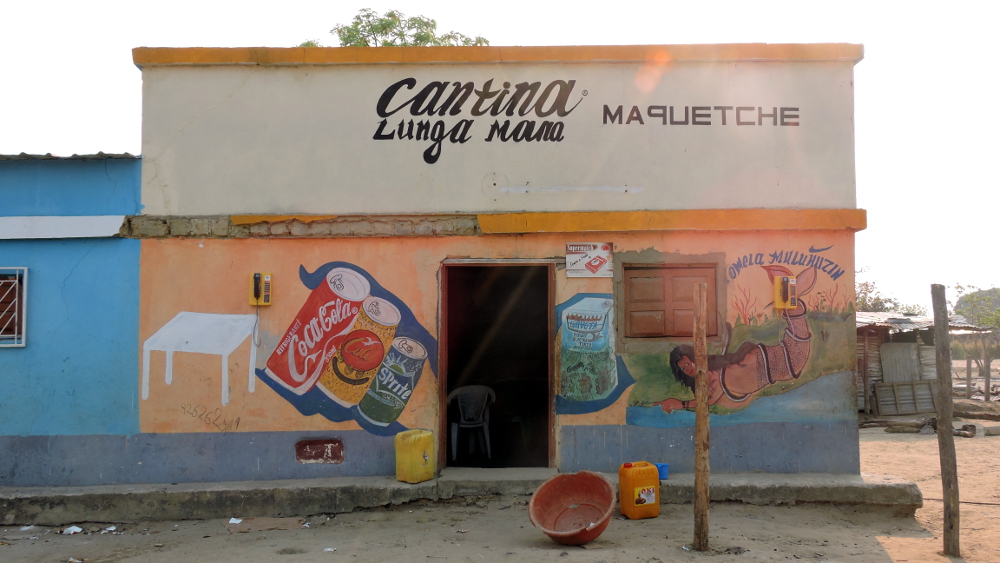
I invited the nurse and his assistant for beer and food was served. For light we had a battery lamp and I had taken my headlamp from the pannier bags.
I was allowed to pay for the beer but not the food. They invited me.
Before I continued the next day, I went back to the clinic where the nurse checked the wounds. He gave me Paracetamol and a prescription for Dyclophenac and antibiotics which I could get at the hospital in Lucusse.
I was very thankful. One didn’t pay for treatment in Angola. I gave him one of my headlamps as a gift so that from now on he could treat patients in the dark.
There was a lot of deforestation in this area to make room for manioc.
If that was a good thing? I didn’t know what else would grow on the sandy soils.
It was lunchtime when I reached Lucusse. I had planned to just take a longer lunch break, pick up the medicine, and then continue even so I hardly fitted into my bike shoes.
The nurse was a small man without teeth who quickly got me some of the drugs.
Part of the prescription we collected from a “private” doctor. His wife sold drugs from China which had reached the country through obscure channels.
Eric, the doctor, immediately took care of me. He didn’t like how the nurse in Canaje had dressed the wounds.
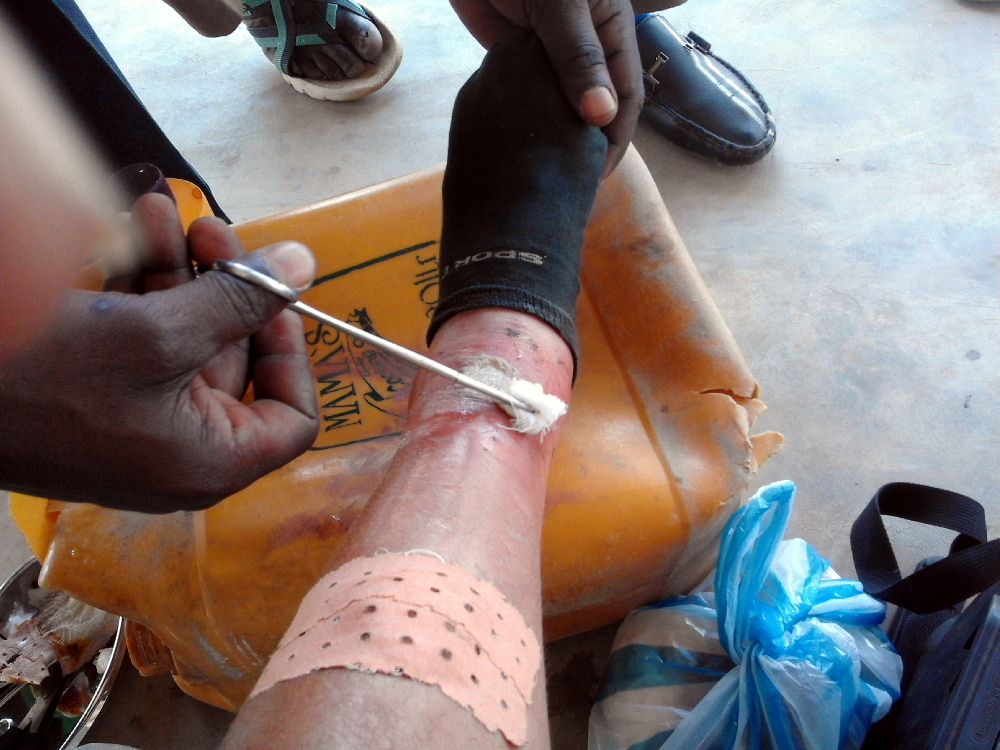
He had trained in the Congo where he had been as a refugee and had learnt French.
His main task was to accompany the team from MAG (Mines Advisory Group) which looked for and deactivated landmines.
By chance, the whole team was in the camp, where I was allowed to look around and ask questions. They had defused about 400 mines in the last few years. They still had to check a lot of land and would be busy for several years.
Fortunately, there hadn’t been any accidents in recent years. When many refugees wanted to return to Angola after the war, especially in the border region with Zambia, they had to quickly clear this area.
Eric’s wife, Precious, had asylum in Zambia. Two of their three sons were still there with her mother. They preferred to stay a bit longer because the situation had been too terrible. They wanted to wait for the elections in 2017.
Eric told me not to wear my shoes which would have been hardly possible anyway.

(Now I can publish the photos. Everything has healed well and only a few scars remain).
Some of the people had been in refugee camps in Zambia and spoke English with me. That was much easier for me than Portuguese, which was the administrative language.
One of the teachers visited me before classes started. He taught English for which he wasn’t paid. The government had no money for it. He wondered if he should return to the refugee camp in Zambia where life had been better.
He wasn’t the only one.
After a night of camping at the police station, I sat at the vehicle check point. I couldn’t cycle and was hoping that a car would give me a lift. I was worried about my return flight.
They told me immediately not to get up my hopes. Hardly anyone came this way which was strange because this was a main road to the border which, so far, was paved.
I spent the whole day, wrote my diary and chatted with people. The police really had a relaxed job. When a car arrived, they drove to town.
Evening arrived, I was hungry, and was just starting my stove when a car arrived that could give me a lift.
On the one hand I was happy to get on my way, on the other hand I was hungry and didn’t want to start at night. I didn’t have much choice. My bike was hoisted on top of crates of beer and soft drinks. I was allowed to ride in the cabin of the Toyota 4×4.

After we left town, I immediately realized why no one traveled this route: sand! I couldn’t believe it after they had told me the road was paved until the border. The next 200 kilometers were only sand. This fine, deep sand which I knew by heart.
I was so happy that I hadn’t stayed in Lucusse to continue next day by bike.
The road was so bad that Oskar, the driver, chose his own way through the bush and the tall grass. Even with a 4×4 it was difficult to get through. Fortunately, my seat was much more comfortable than it had been in the old truck from Munhango to Luena. Oskar seemed to be a nice and trustworthy man. I quickly realized that he didn’t travel this road for the first time.
Of course, we couldn’t avoid a flat tire.

Oskar and his help mate, Emanuel, changed the tire with incredible speed. And that even so it was dark and we were in the sand. They were really very experienced.
In the middle of the night we reached a house on the Zambesi River. All who were in or on top of the vehicle, went inside to sleep. I did the same, at least for a few hours.
In the morning Emanuel asked me how I was going to continue. Once I had crossed the river, it’d be another 56 kilometers in the sand until the border.
I couldn’t believe it. I had been told that Zambia started after the Zambesi. From there onwards the road would be paved and wonderful. I asked myself when this odyssey would be over.
Emanuel told me I could continue with them.
The car stayed this side of the river. All the cargo and my bike were shipped across in a dug-out canoe.
On the other side, we waited for a pick-up that took us to the border.
It was a family business. Oskar and Emanuel bought the merchandise in Luena, drove to the Zambesi, where a third family member had a dug-out canoe. A fourth member of the family had a pick-up on the other side, and a fifth had a store at the border.
Which now had restocked shelves.
They did this trek once or twice a week.
The whole extended family lived from the profits which were a few cents per can. It seemed to be enough and there weren’t any other jobs.
And once again a day had passed. I camped behind the store and the next day, pushed my bike across the border.

I was very thankful for many people in Angola. There was always someone who helped me which made the whole country very likeable. Despite all the difficulties.
I spent 19 days in country and traveled 880 kilometers. I can’t tell, how many extra kilometers by car.
The route I had chosen was on “primary highways”, not little side roads.
After the railway had started again the road became so neglected that it barely was used.
If someone wanted to ride from Angola to Zambia, especially with a vehicle that wouldn’t fit in a dug-out canoe, they should take the route via Malanje. It’s best to come into Zambia near Mwinilunga where a bridge crosses the Zambesi.
This year elections were planned. I wish the country all the best, the people really deserve it.
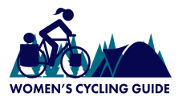

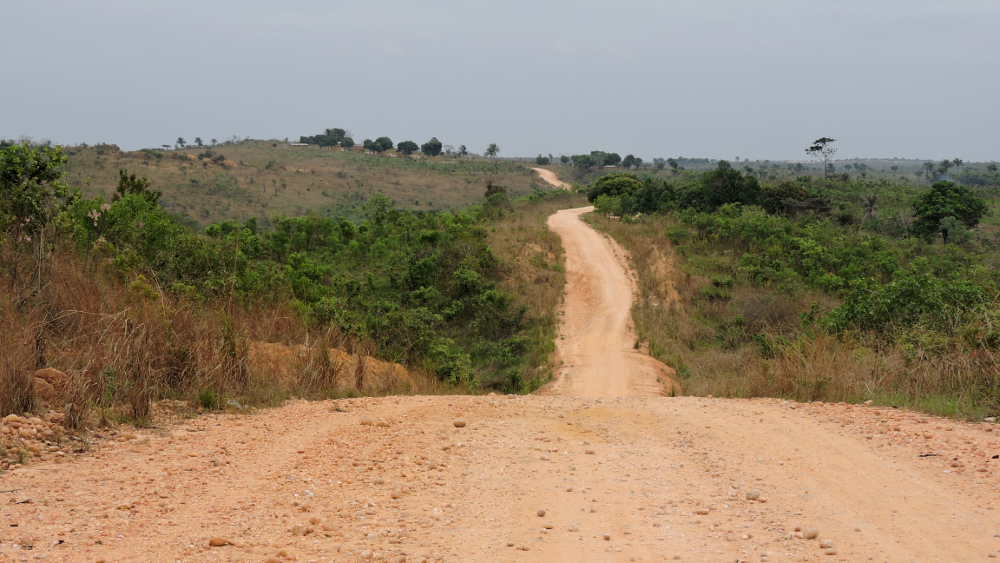
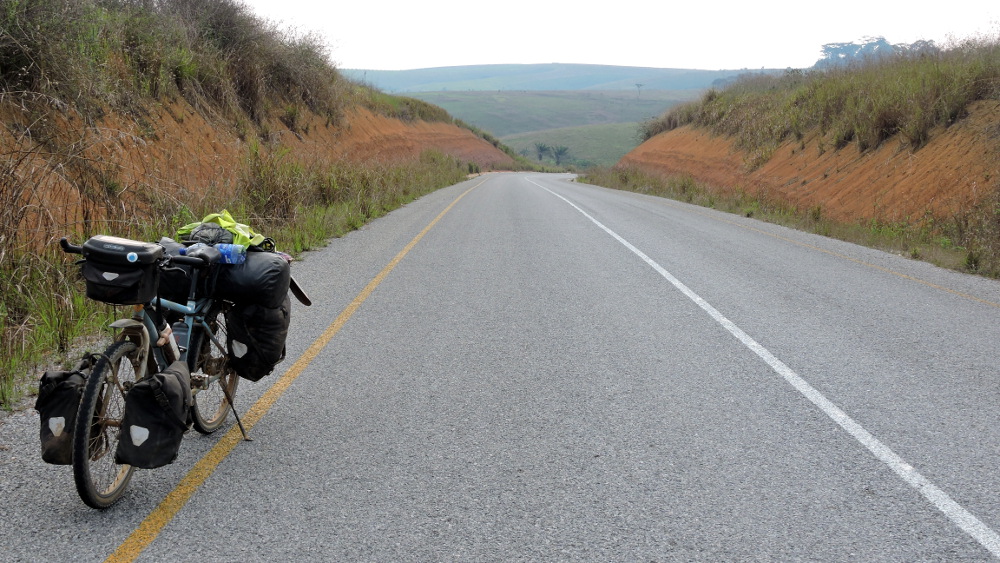
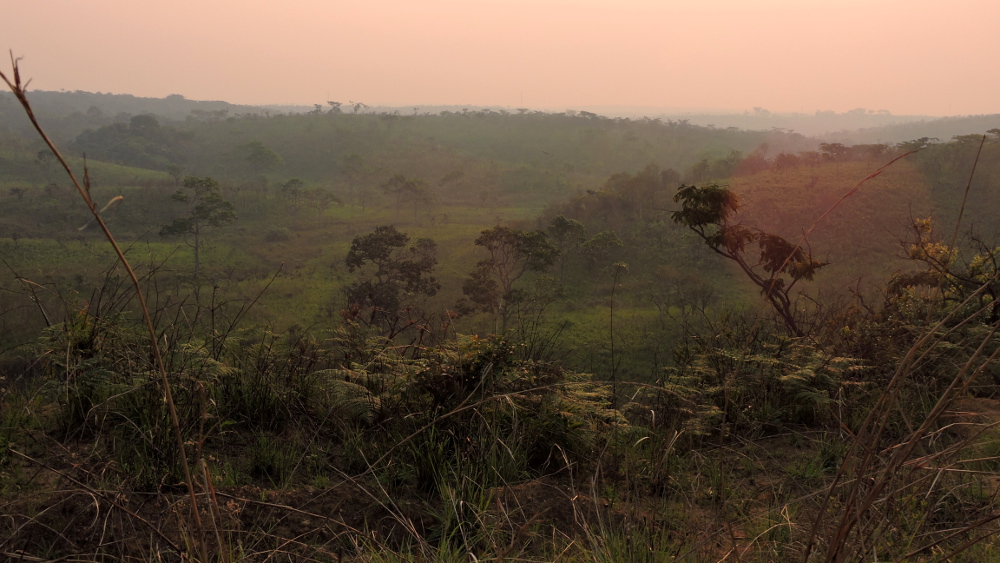
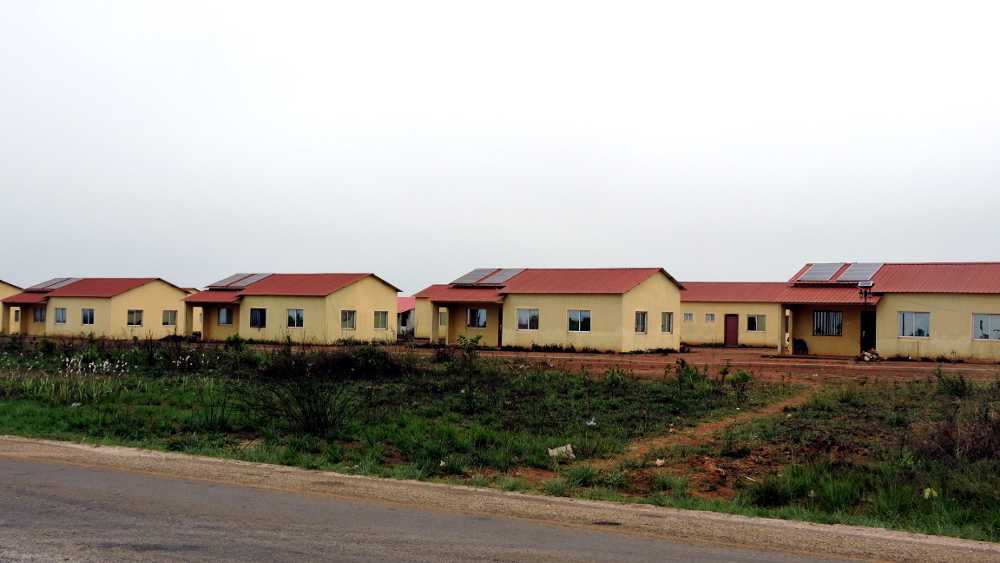

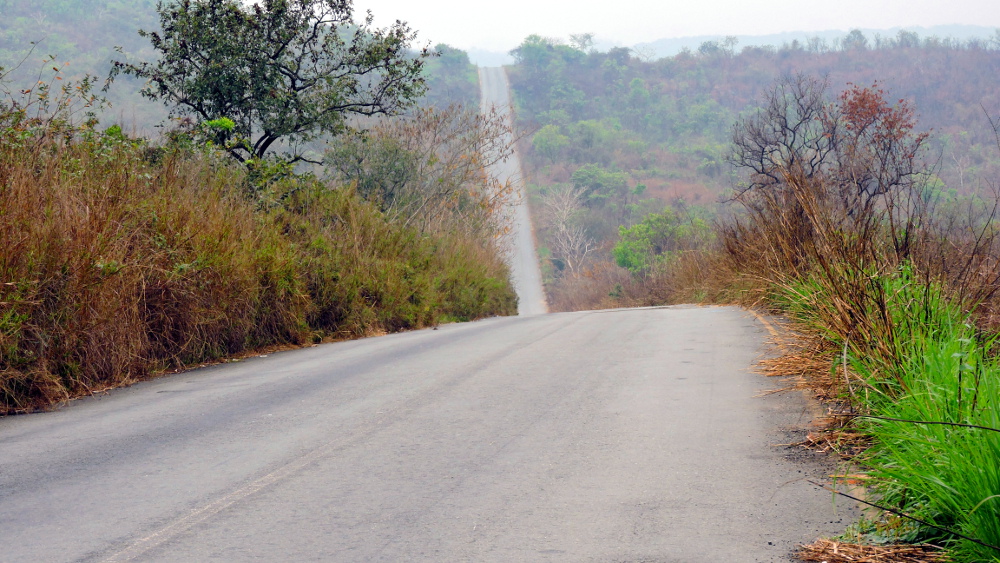
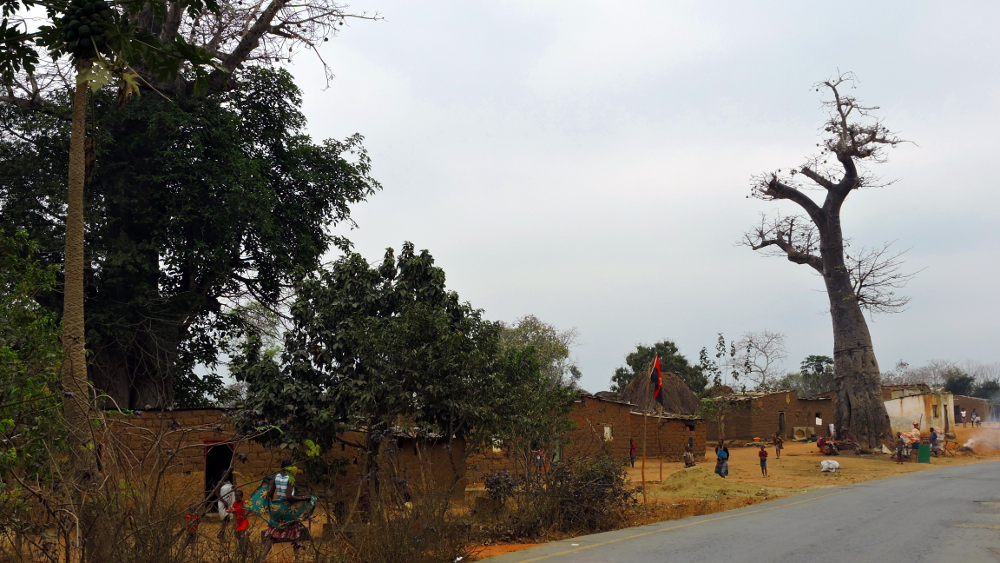
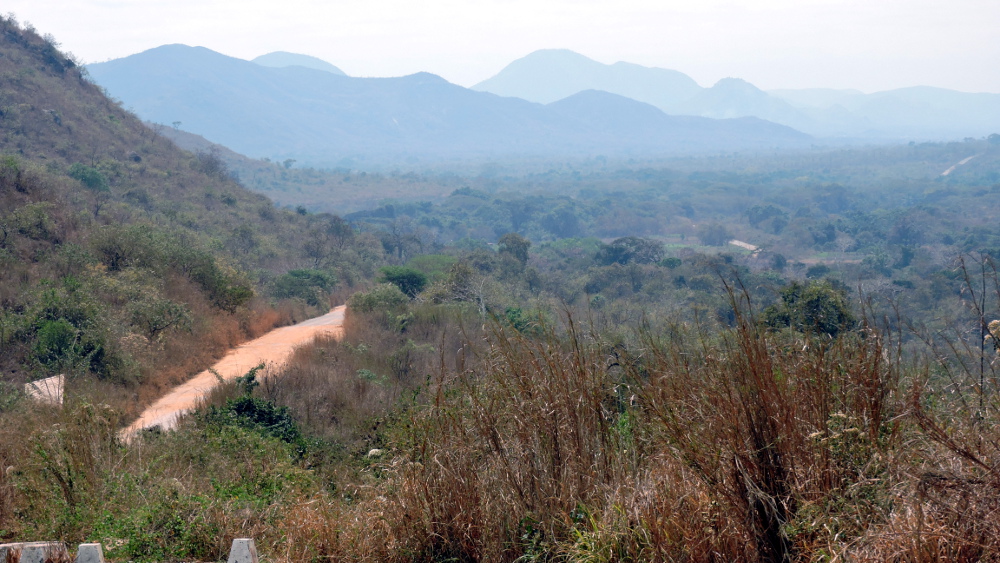

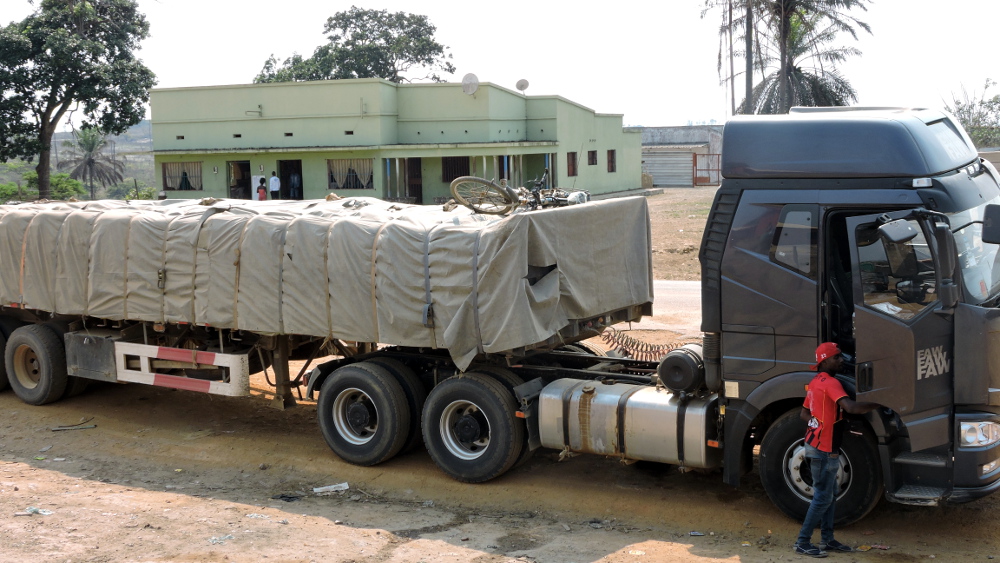
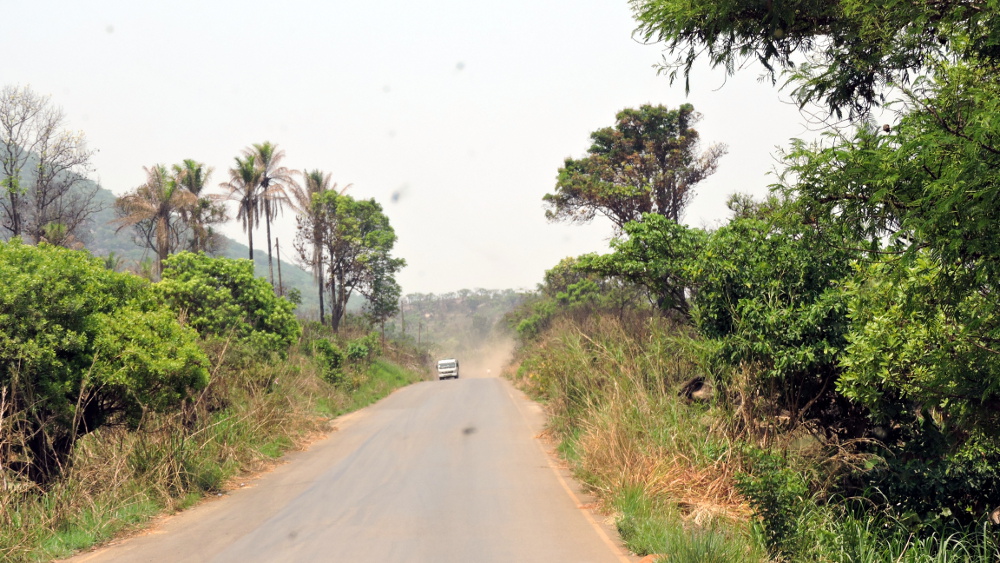
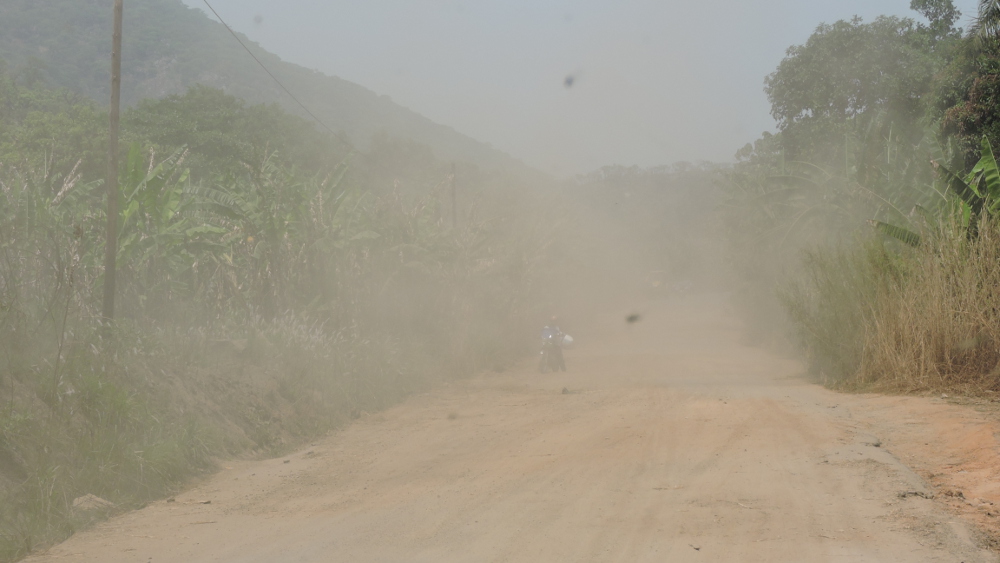
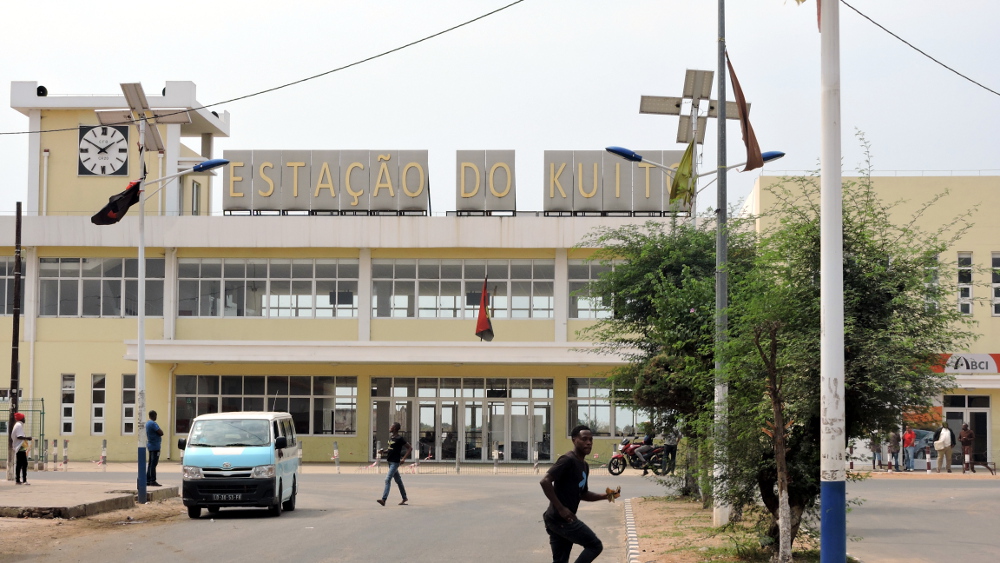
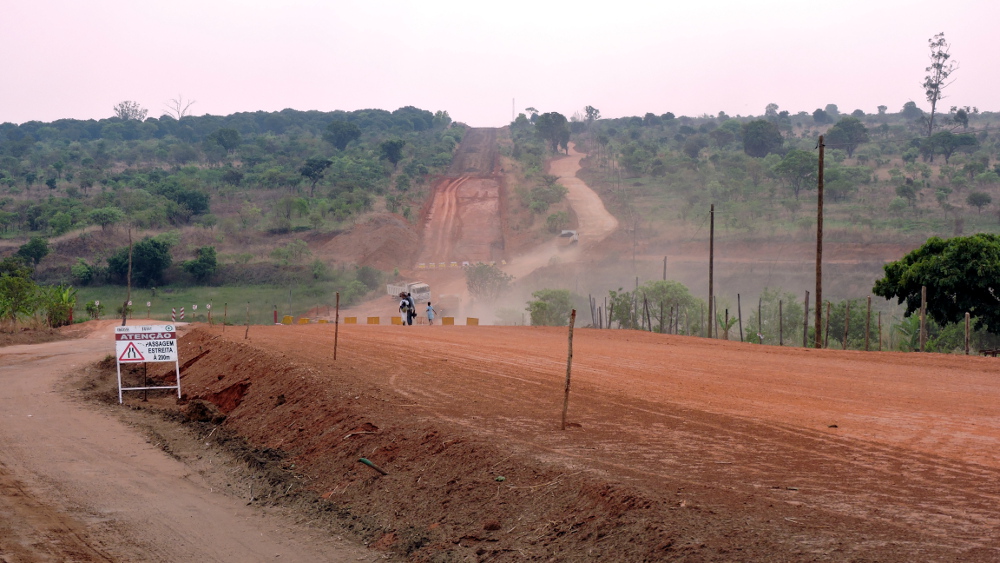
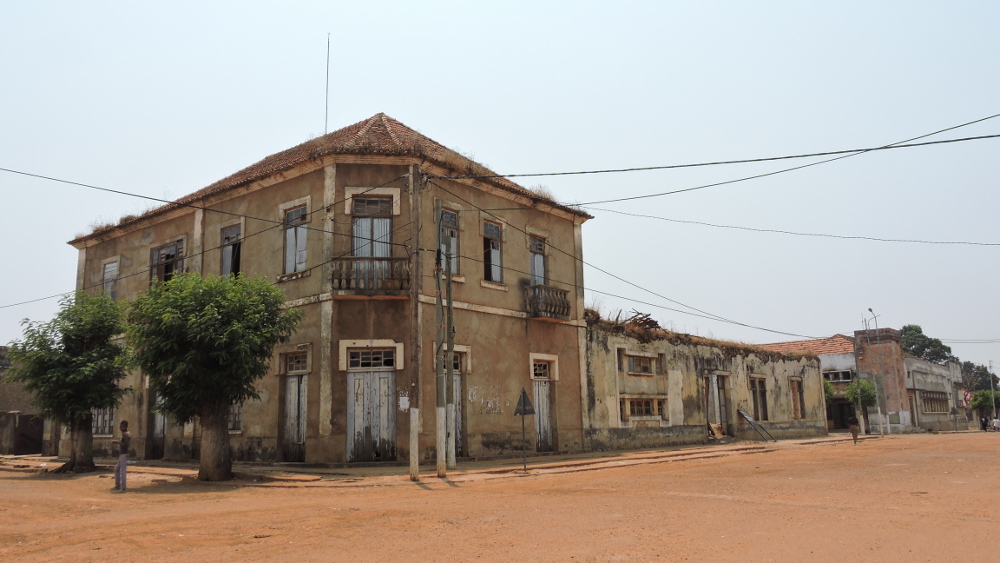
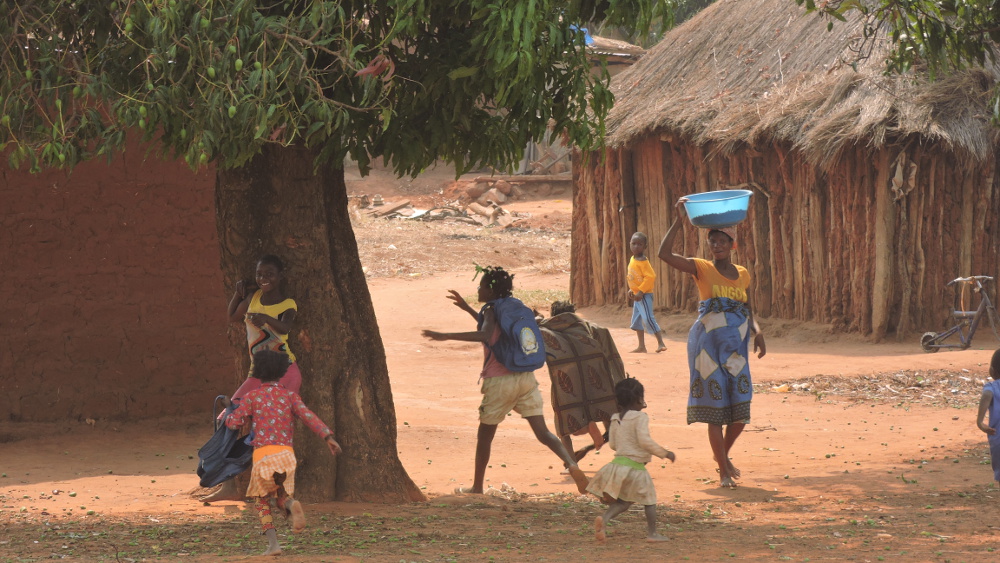
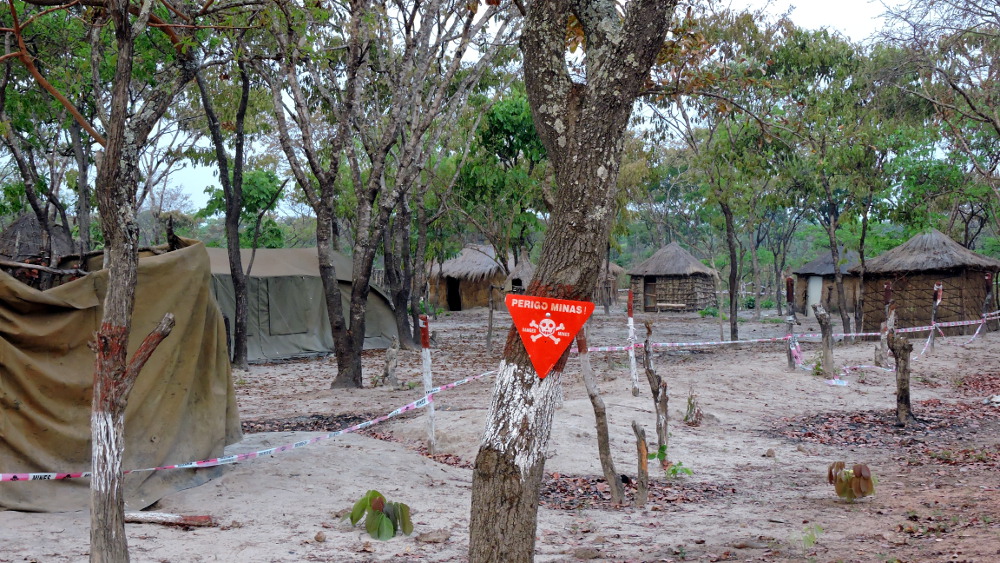
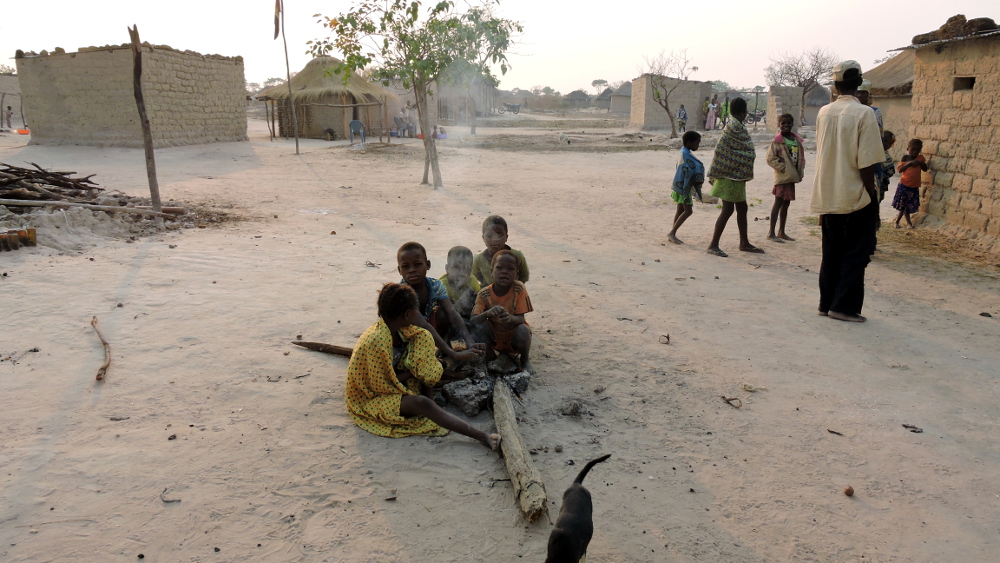
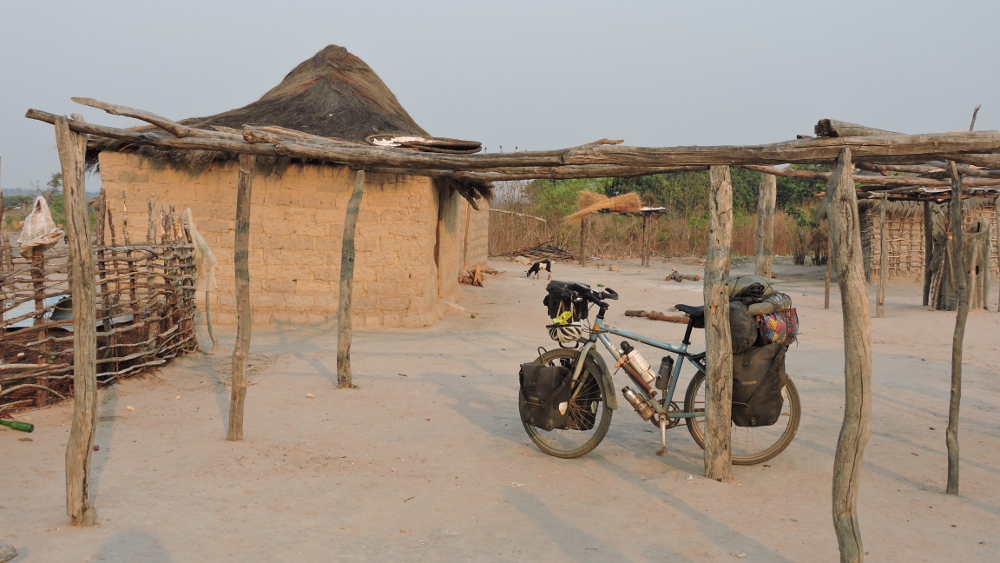
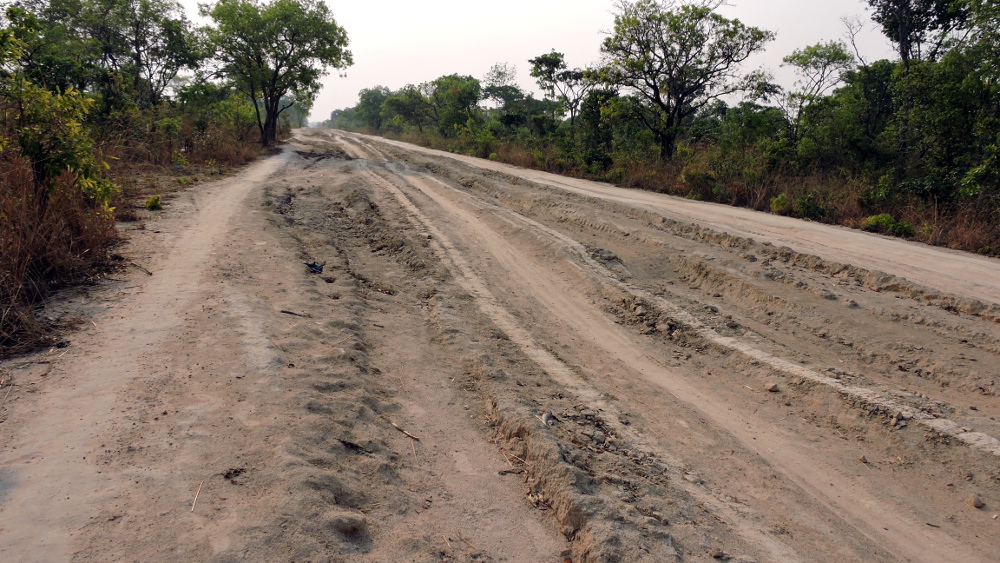
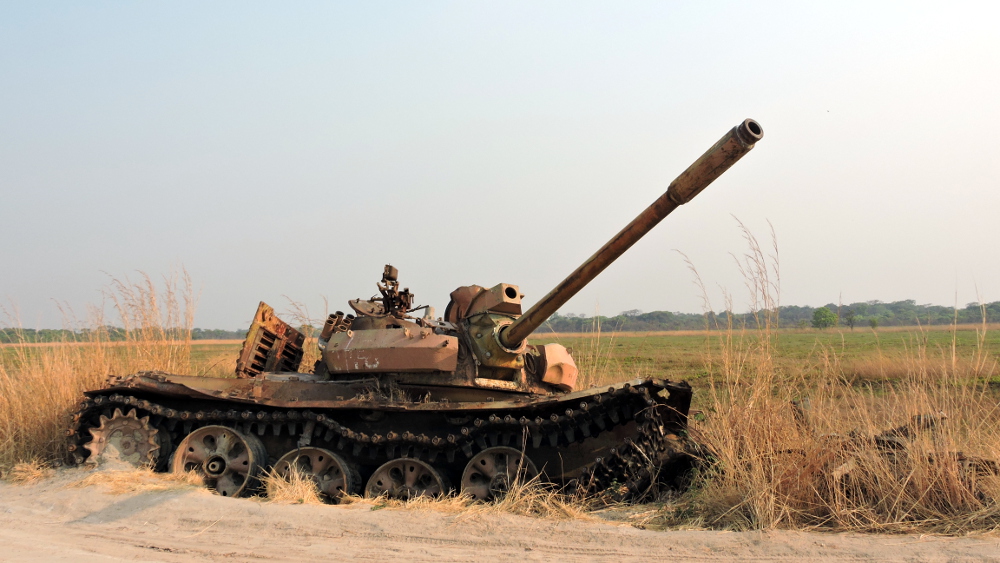
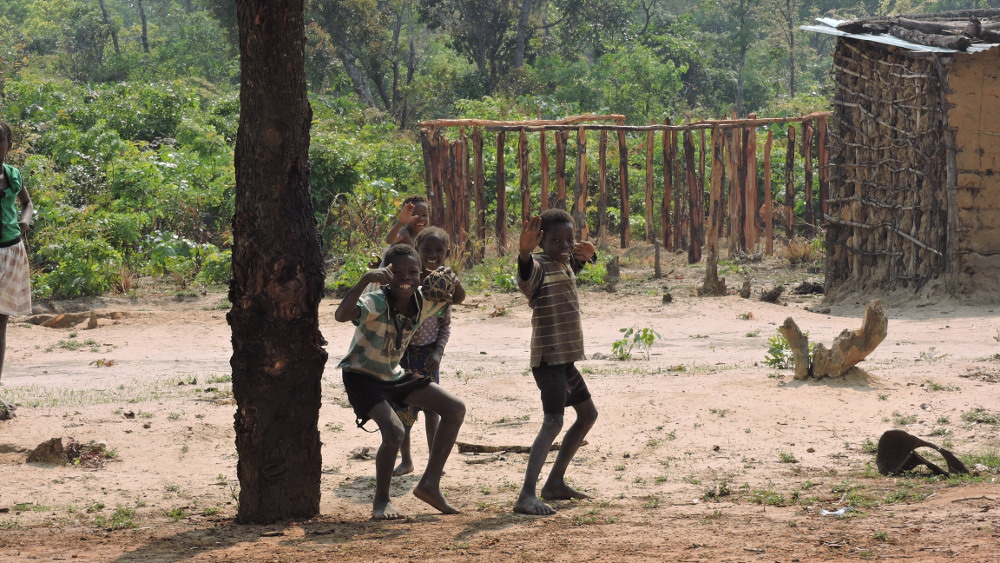
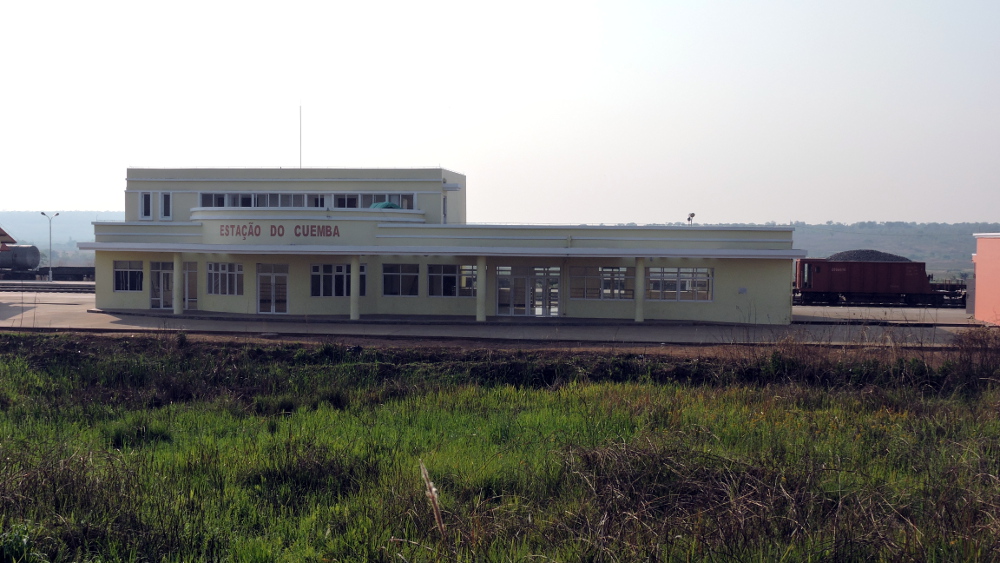
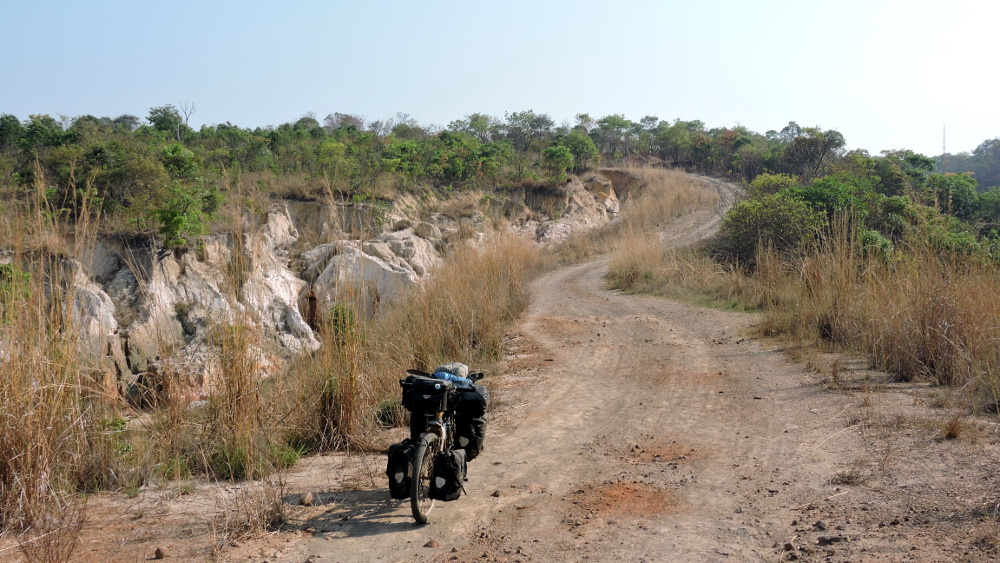
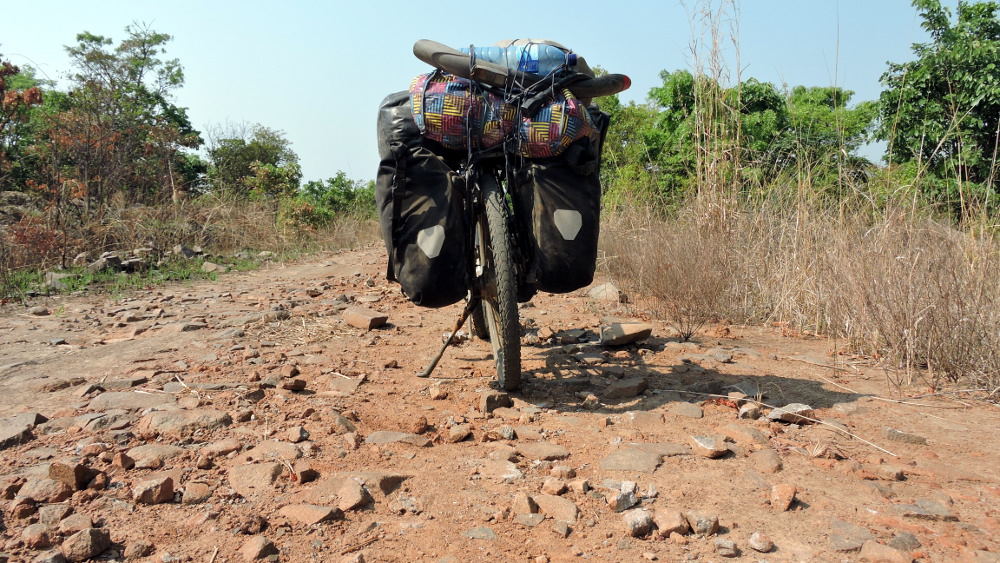
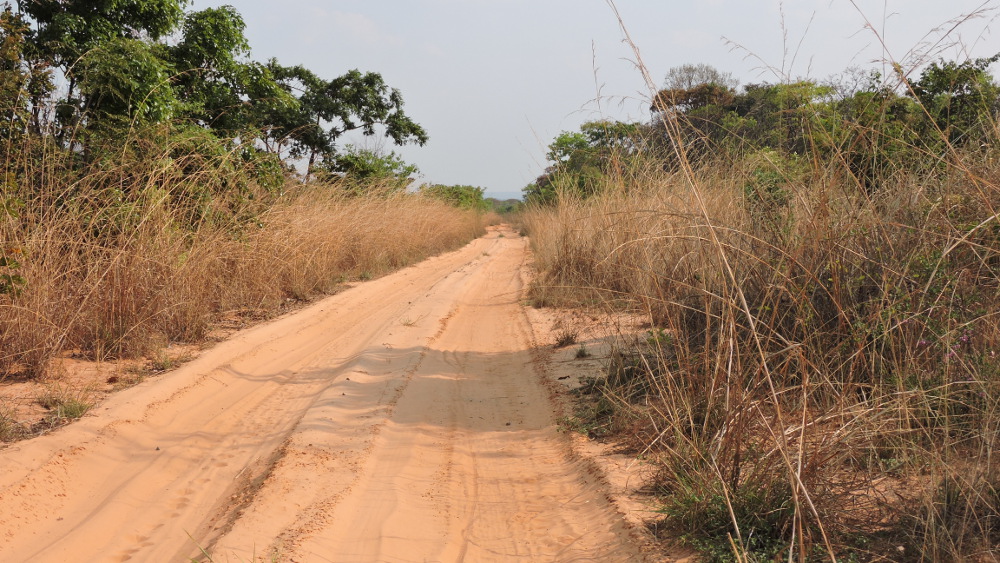
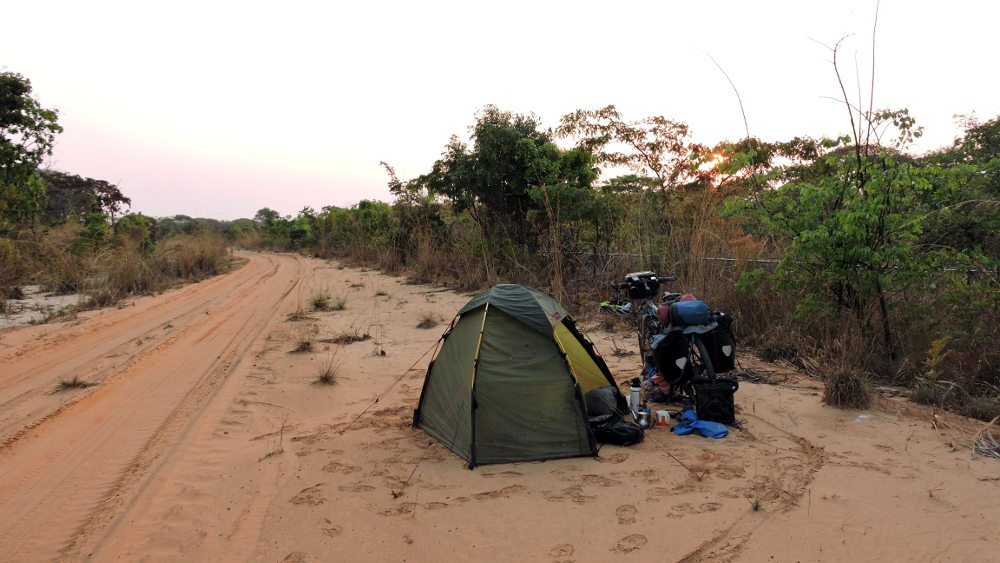
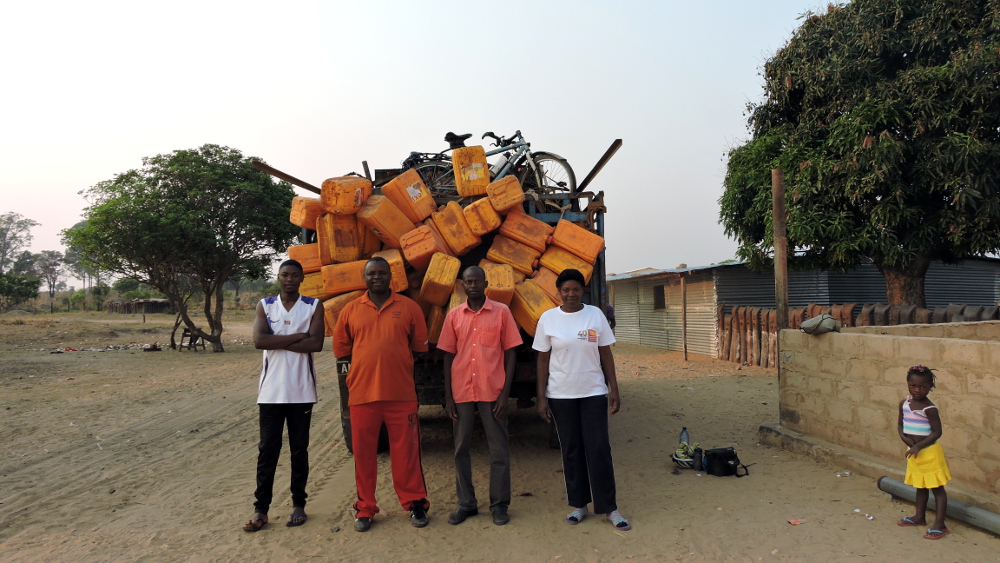
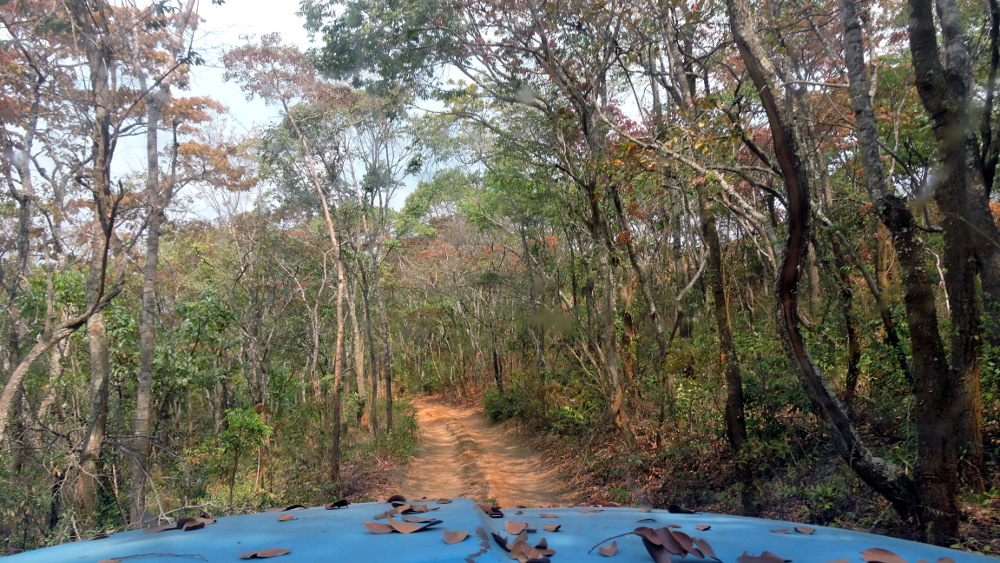
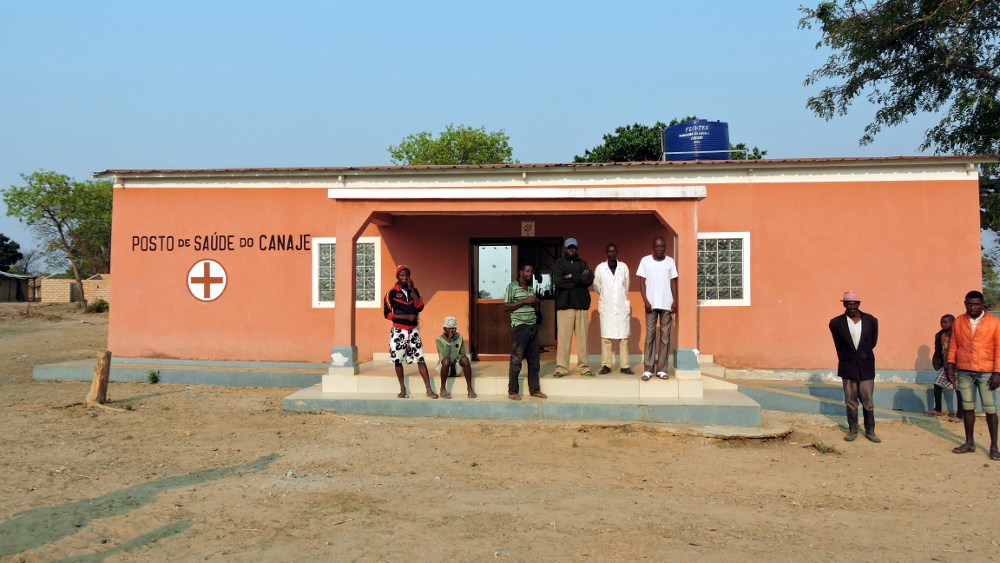
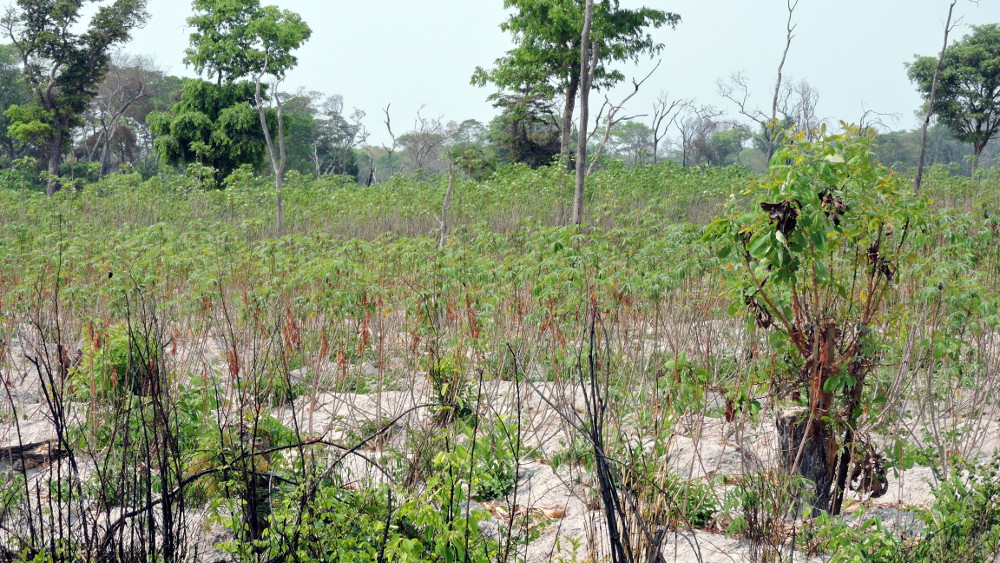

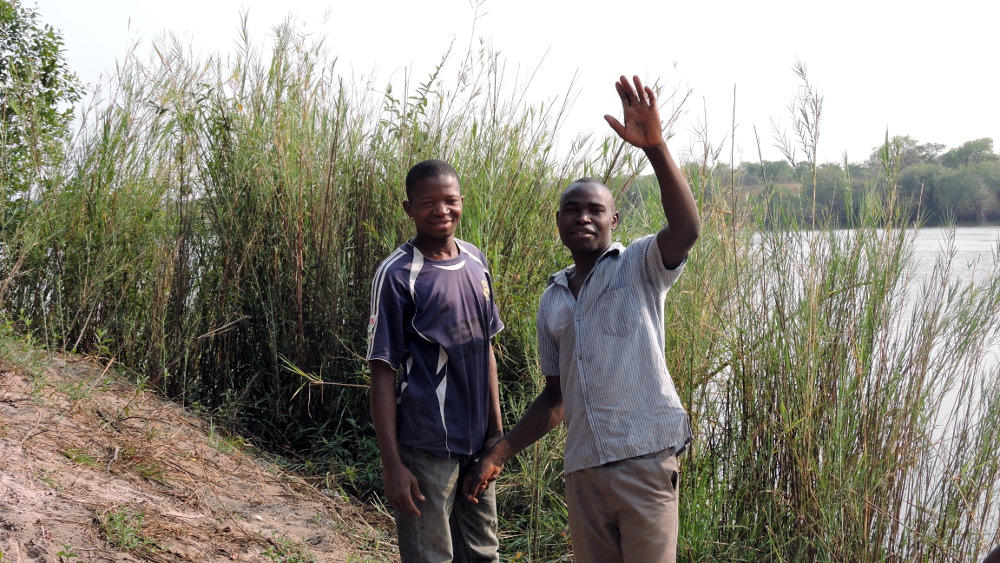
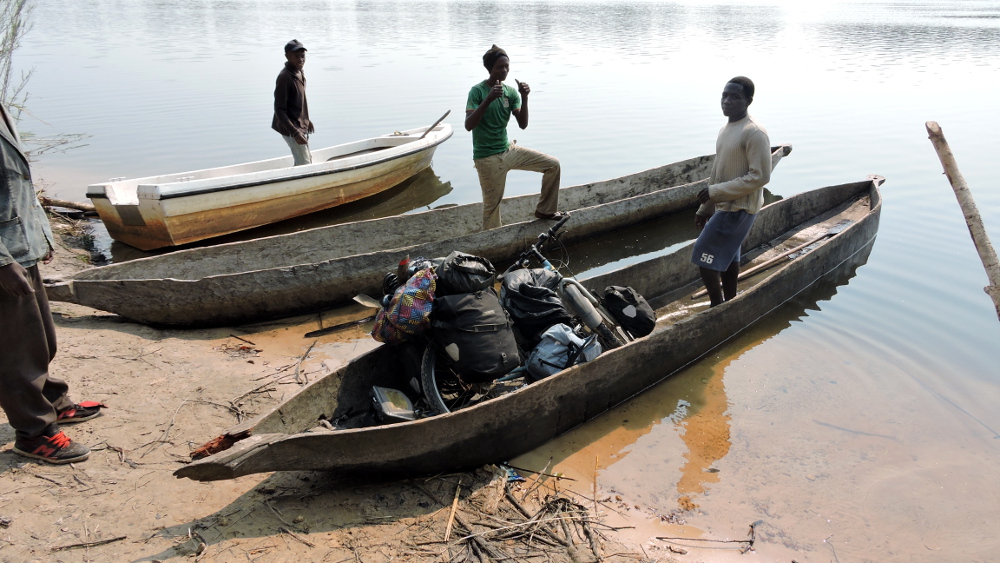

I stumbled upon this post searching for helmet laws for cycling in Luanda, and it was truly a totally unexpected gem. Thank you so much for sharing your experiences, and your photos. The story was riveting. I’m so glad that you were able to get competent medical help, and that so many helpful and kind people helped you along the way.
Thanks a lot Adrian for your comment. Have a great time in Angola